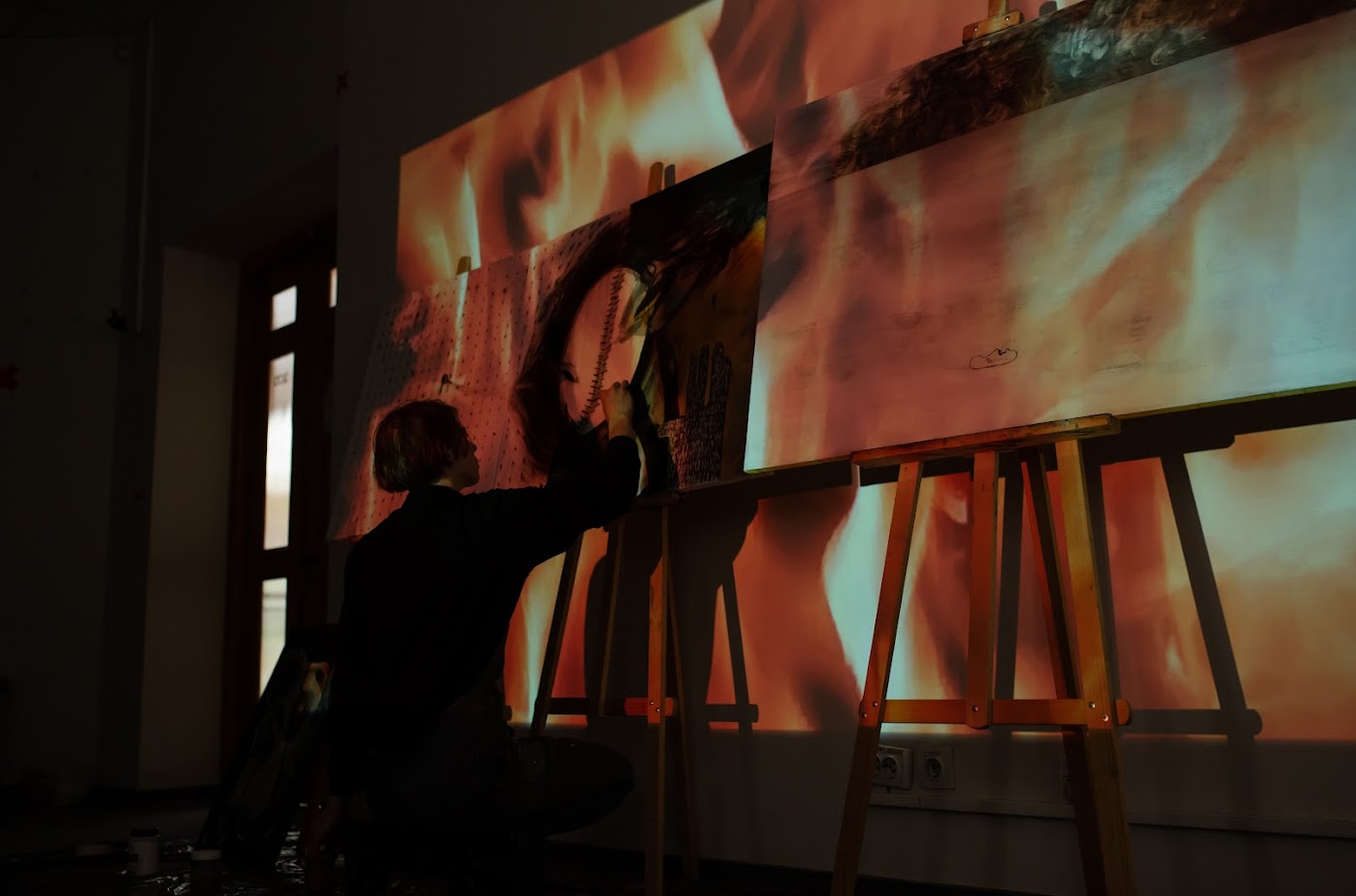
“The Works of Artists Should Speak More Than News.”
How Was the Artistic Plein Air Organized by UCU in Cooperation With SaveCultureUA
The Ukrainian Catholic University in cooperation with the volunteer movement SaveCultureUA held a plein air, which took place from 4 to 10 April. It was attended by artists who were forced to flee the war to safer regions. As part of the plein air, the artists were provided with studios, canvases, tools, as well as travel and accommodation, so that they could concentrate on creativity as much as possible.
“The works of artists should speak more than news. For countries rooting for Ukraine and watching the war, art says more than photographs. It is painful to look at the photos, your eyes close, but art allows you to analyze deeply. Therefore, even during the war, the artist must be in their place and, like a journalist, cover events with their own artistic means,” this is how the coordinator Uliana Krekhovets comments on the importance of holding an open air even in today’s realities.
SaveCultureUA GO Chairman Petro Antyp, an artist who has been deprived of his home and studio for the second time by the war (2014 – in Donbass, 2022 – in Kyiv), also claims that “muses should not be silent even when there’s a war on.” Here is the artist’s direct speech: “I am glad that the Ukrainian Catholic University, together with the SaveCultureUA volunteer movement, organized a plein air to support young and already well-known artists. Thanks to this, people who left the territories where hostilities are being conducted could relax a bit and create works for the good of Ukraine. After all, as long as culture is alive, the country also exists.”






The plein air was intended not only to provide artists with a temporary shelter and opportunity to relax, but also to become an environment in which some of the first artistic statements regarding the war in Ukraine would be born.
“Now we live in a very unique time for Ukrainian art, because if in recent years we have rather reflected on the trends of world art, now we are at the starting point, at the epicenter of events. The artists who stayed here or went abroad are the primary source and inspiration for all the art that will be formed in the future,” says the plein air participant, artist Viktoriia Romanchuk.
For the Ukrainian Catholic University, such a format is not new, since the head of the development department, Andriy Kurochka, has repeatedly organized plein airs in Ukraine and abroad in previous years.
This year, despite the war, the event also took place, and, according to the organizers, “this format was experimental, it appeared as a response to the challenges of the time.” This plein air was special, because for the first time it brought together both professional artists, such as Albina Yaloza, Nikita Tsoi, Olga Zaremba, Kateryna Zub, Viktoriia Romanchuk, Oleksii Konoshenko, Vitaliy Zherdev, and young artists, namely students of the Kharkiv State Academy of Design and Arts, among whom Svyatoslav Nemchenko, Daria Karnaukhova, Kateryna Leleko, Oleksandra Vinichenko, who came from Mariupol, and Kateryna Motspan. Here, the artists managed to recover a bit from their experiences and find relative peace.
“In the first weeks of the war, I did not want to do anything, I felt nothing but horror. But then, when I moved to Lviv, I began to realize what was happening, and what would be my response to it,” says Daria Karnaukhova, a student at the Kharkiv State Academy of Design and Arts.






Although this plein air, unlike the previous ones, has a name and theme dictated by today’s events, its participants were not obliged to reflect exclusively on the events of the war: everyone could speak on the topic and in the way that they considered necessary.
So, for example, the artist Kateryna Zub worked with the sculptures she saw on the way from Kharkiv to Chernivtsi: “I created the paintings “Mother” and “Christ Conquering” – both depict real sculptures that I saw while driving Kamianets-Podilskyi.”
Another plein air participant, Nikita Tsoi, shared that he was also trying not to delve into the topic of the war and somewhat postpone the creative reflection on the recent events. “Of course, what is happening now affects my work, but I don’t want to deal with copying photos that appear in the information space, resorting to specifics,” he says.
However, some artists began to comprehend events on paper from the first days of the war. Among them is Olga Zaremba, who created a series of sketches on the themes of fear and anxiety, as well as several drafts of children’s portraits who survived the war. During the open air, the artist managed to finalize these artworks.
Viktoriia Romanchuk and Oleksii Konoshenko in their work captured the feelings associated with the latest events in Ukraine. Their multimedia project consists of four canvases, each of which corresponds to the emotional states that the artists lived through at different stages of the war. As planned by the authors, the picturesque part of the project should be combined with video mapping – excerpts from the conversations of people who were separated by the war.



During the plein air, each artist created up to four works, one of which was left as a gift to UCU, while others were donated to a charity auction that will take place soon. The proceeds from the sale of the works of the plein air participants will be used to support the student community of UCU.
By Yevheniia Tsatsenko
Photos by Olexander Urban, Yurko Karuk